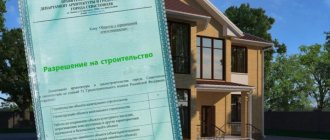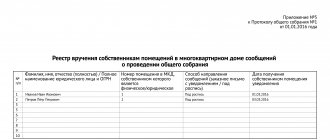Home / Real estate / Land / Categories of land / Agricultural land
Back
Published: 11/02/2017
Reading time: 9 min
0
902
Summer cottage construction is possible on sites for various purposes. The construction of a country house on a site of each type has its pros and cons, determined by legal restrictions and requirements for the design of buildings.
- Land for summer cottage construction
- Capital construction on a summer cottage
- Construction permit
- Permission to use land
- What land can be used for summer cottage construction?
- Conclusion
Land for summer cottage construction
Dacha plots are lands that have “Summer dacha management” as the type of permitted land use.
In accordance with the classifier approved by Order No. 540, a dacha plot involves the following types of activities:
- Construction of a residential building of no more than 3 floors;
- Construction of outbuildings;
- Growing crops.
Dacha plots belong to the category of land in populated areas. Construction on such lands is regulated by the Town Planning Code of the Russian Federation. According to paragraphs. 3.9 tbsp. 35 of the Civil Code of the Russian Federation, dacha farming can be carried out in residential and agricultural zones belonging to the lands of populated areas.
In what case can you build housing?
Agricultural land is the concept of a designated purpose. In turn, such lands are divided into territories:
- Designed for arable land, haymaking, nursery, pasture and other agricultural needs. Everything that concerns them is regulated by Federal Law No. 101.
- Others for the construction of garages, gardens, vegetable gardens, dachas, farmsteads, farming and livestock.
On a note. Each of these territories has types of permitted use (PUR), in other words, what they can be used for. It is this definition that determines whether it is possible to build a residential building.
More information about the types of permitted use and characteristics of agricultural land is written here.
Housing construction is permitted on the sites of the following VRI:
- Placement of garden and country houses.
You can build a house on such plots without obtaining permission from the authorities. In addition, there is no need to adapt to the development project or other restrictions. There is one “but” - such a house will not legally be residential. However, this can be corrected by the court, which, based on the conclusion of a special commission, recognizes the house as residential. By the way, you can purchase a plot of land with an existing residential building. The downside is the higher tax rate than on plots for individual residential construction (we wrote about the taxation of agricultural land in this material). There is a “dacha amnesty” provision, according to which you can quite simply register ownership of both the plot and the housing on it. You can learn about the nuances of using such land for summer cottage construction and other needs in a separate article. - Personal subsidiary plot with the right to build.
As a rule, these are large areas for agricultural production. Such lands include houses in rural areas. A residential building can be built on them. However, in areas outside the boundaries of a populated area there may be a ban on construction, and even a fence cannot always be erected there. To build a house on a subsidiary plot, it is necessary to create a project and coordinate it with various organizations: fire service, SES, power engineers, architectural department and others. You also need to know that private household plots may have a limit on the number of buildings erected, for example, only one house. Unauthorized construction of a house in a private household plot can only be legalized if the site is owned. - Territories of peasant farms. These are quite large areas intended for growing fruits and vegetables, livestock farming, processing finished farm products, etc. Federal Law No. 74 states that such a site may contain everything that is necessary for the activities of a peasant farm. Reference. There are no direct prohibitions on the construction of a residential building, as well as open permission. Considering that peasant farm lands have no restrictions on the construction of various objects, it is quite possible to build a house.
Another thing is to obtain a building permit. The fact is that the unclear position of the legislation forces municipal authorities to refuse. But there is another way - first build a house, and only then file a lawsuit to recognize it as residential.In court, it must be emphasized that the activities of a peasant farm require constant presence, therefore a residential building is necessary for the successful existence of a peasant farm. How to prove this? Say that there is a garden, animals that need daily and hourly care.
By the way, in the Moscow region, the construction of houses on the territories of peasant farms is not something unknown. Such lands are used for the construction of cottages without any farming activities.
- Individual residential construction.
Plots directly intended for housing construction are also not prohibited from gardening. There are restrictions on the placement and area of the house, and a building permit is required. The tax on such premises is lower than, for example, on a house in a private household plot. You can create a house with up to 3 floors. By the way, the construction of a residential building is mandatory. - Blocked residential building. Up to 10 houses with walls, up to 3 floors high, are built in a row. At the same time, there are areas for gardening activities.
What can be built on agricultural land is written in a separate article.
Nuances on legal aspects and some features of the issue
If you decide to take a plot, then, most likely, you will come across many incomprehensible terms, and not only the process of registering a plot, but also its price largely depends on how clearly you distinguish the difference between one or another concept.
Types of land use
For clarity and to improve the perception of information, we will present all data on this issue in the form of a simple table:
| Plots for individual housing construction (IHC) | According to the law, one detached residential building with a height of no more than three floors can be built on such a site. In such a house, registration at the place of residence is possible without any problems; we can say that this is the most popular and widespread option in our country, used by most developers |
| Plots of land for personal subsidiary farming (LPH) | There is one important nuance here: if the land is located within the city, the plot is considered a personal plot, and a residential building can be erected on it. If the plot is located on agricultural land, then it is classified as field land, and the construction of residential buildings on it is prohibited by current legislation |
| Country construction | This option is different in that it can be used for various purposes. Therefore, it is worth studying the documents especially carefully; if they indicate that this is a summer cottage with the right to build a residential building, then you will be able to register after construction, but if the documents indicate the right to a residential building, then you cannot register in this place |
Important! When choosing one option or another, it is worth remembering that you can often buy a summer cottage plot one and a half to two times cheaper for the same area. This is a very important factor, because if you can build a residential building on the land, then it is, in fact, no different from individual housing construction or private household plots.
It is worth noting that if you are not registered at your dacha plot, then there is a danger that with the expansion of urban development, your dacha will be demolished, so there is no point in erecting a permanent structure, it is easier to use country houses from modular containers, they are easy to build and, if necessary, easy transport to another place. (See also the article Country houses made of timber: features.)
Read more: How to calculate the cadastral value of a private house
Block containers are an excellent option for quick construction; the instructions for their construction are extremely simple
Features of the allocation of land in settlements
Let's look at how land in populated areas is allocated for dacha construction. Be prepared for the fact that the process is quite troublesome and usually takes from 4 months to six months; you will have to resolve a number of issues. (See also the article Caravans for the dacha: features.)
The action plan is as follows:
- The plot of land must be owned by a partnership, legal entity, individual or group of persons. It is important that all necessary documents are present.
- Next, you need to contact the administration, which must write a petition to the head of the administrative unit in order to obtain permission for a certain type of use without changing the category.
- A date is set for public hearings, during which a change in the type of use of a particular plot of land will be discussed. This event is reported in the media so that all interested parties know about it.
- On the appointed day, hearings are held in the administration of the territorial unit; a secretary is appointed from among those present, who draws up a protocol in which all the issues discussed are noted and the data of all those present is recorded. The finished document is signed by the chairman of the commission, usually the head of the municipality.
- A few days after the hearing, all interested parties are given a special conclusion, which sets out all the results. The document must be signed by the district leadership. The results are also published in the media.
- Next, the documents are sent to the nearest structural unit of Rosnedvizhimost, which is taking a number of measures to change the type of permitted use of the site. The procedure is quite lengthy, so you will have to wait a very long time for the result, but it is unlikely that you will be able to do all the procedures faster. When all issues are resolved, the owner is issued an act of determining the cadastral value.
- Next, you need to submit documents to the regional departments of Rosnedvizhimost so that they change the type of cadastral registration in accordance with the new purposes of use. The authority must issue you an extract indicating that the type of use has been changed and the site can be entered into the unified state register.
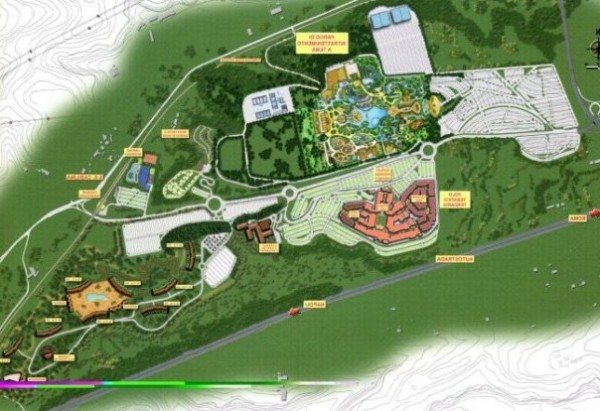
The land registry contains information about every piece of land on the map
- And finally, the last stage is obtaining an official certificate of ownership of the site indicating the new purpose of use. In fact, if changes are made to the cadastre, then there may not be a certificate. All the same, in the database you will be the owner of the land, and no one will be able to challenge this right if all procedures were carried out without violating the law.
This is how land in populated areas is allocated for dacha construction. As you can see, the process is not easy, but quite feasible.
And then you can start construction; first of all, you should take care of connecting communications; if they do not exist yet, then such a type of service as renting a diesel generator for a summer house will help to do the work of pouring the foundation.

The generator will not allow work to stop
Permitted and prohibited activities on such land plots
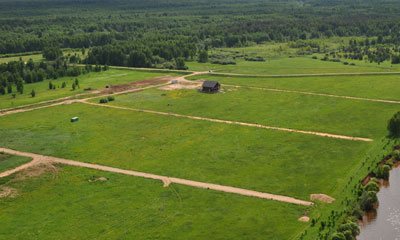
It may happen that, having acquired a plot of land, its owner will be faced with the fact that the law does not allow building a dacha on this territory, much less a country house.
How do some land plots differ from others, and how do these differences affect what kind of buildings can be built on them?
The most preferable for future landowners are plots intended for gardening or vegetable gardening.
Gardening and horticulture are essentially different types of activities and, accordingly, permits for the use of these lands also differ from each other.
For example, on lands intended for vegetable gardening (code 13.1 according to the VRI classifier), various crops can be grown:
- berry;
- vegetable;
- melons and others.
You can also build:
- shed for storing agricultural implements;
- a cellar for storing grown vegetables and berries;
- shower and toilet.
But that's where the permissions end. The construction of other structures is not provided for by law.
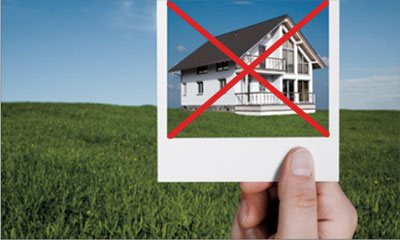
Permits for areas intended for gardening look somewhat different.
There is one caveat to keep in mind here.
The VRI ZU 2021 classifier has two codes for gardening.
VRI with code 1.5 regulates the types of gardening activities for agricultural enterprises operating on large plots of land and selling their products on an industrial scale.
VRI code 13.2 regulates individual activities in areas intended for gardening.
In addition to growing fruits, melons and other agricultural crops, including potatoes, the construction of a garden house on the site is permitted, in which one family can live, since the house cannot be divided into apartments.
Of course, it is allowed to build various utility structures:
- for storing agricultural implements;
- for storing harvested crops;
- household extensions.
Dacha farming: what is it?
First of all, the area must be at least 10 acres. Basically, a typical piece of land is from 8 to 10 acres. Of course, you can start building a home on 5 acres, but then you won’t have the advantages of being outside the city, there will be a view of the neighbors from the windows, various sounds, lack of silence, and there will also be little space to build something additional, for example, a bathhouse .
Documentation can be completed in at least a week. Decisions must be carefully thought out, otherwise there will be disappointment and unnecessary loss of finances. When choosing a site, you need to look at the parameters on which comfort depends. Personal requirements. When choosing a place that will be used in the future, permanent or temporary residence depends on it. Also material opportunities.
We recommend reading: Selling Apartments Less Than 3 Years Owned
Unauthorized construction

The concept of unauthorized construction is regulated by Article 222 of the Civil Code of the Russian Federation. It is subject to demolition or bringing it to the standards regulated by construction rules and regulations that are related to development (Civil Code of the Russian Federation, Article 222).
Demolition or bringing to standards is paid for by the person who built the capital structure, and if the identity of the builder is not established, then the payment comes from the pocket of the owner/tenant of the land plot.
A structure is not recognized as an unauthorized construction if it was built in violation of the peculiarities of the use of the site, which the owner of this site did not know about and could not know about.
Signs of unauthorized construction:
- Placed on a site where construction does not imply the construction of such a building.
- Placed on a site that is not provided in accordance with the established procedure.
- Constructed without obtaining permission or in violation of urban planning regulations.
- It was created on a site that ignored the legal restrictions on its use.
What happens if you build it: responsibility and consequences
Responsibility for the construction of an unauthorized structure may arise under several articles of the Code of Administrative Offenses of the Russian Federation:
| Article | Responsibility | ||
| Individual | Executive | Legal face | |
| 9.5 | Fine 2-5 tr. | Fine 20-50 t.r. | Fine 500 rub. – 1 million rubles or suspension of activities for up to 90 days |
| 7.1. if the cadastral value is established | Fine 1-1.5%, but not less than 5 tr. | Fine 1.5-2%, but not less than 20 tr. | Fine 2-3%, but not less than 100 rubles. |
| 7.1. if the cadastral value has not been established | Fine 5-10 tr. if the cadastral value has not been established | Fine 20-50 t.r. if the cadastral value has not been established | Fine 100-200 rubles. if the cadastral value has not been established |
| 8.8. if the cadastral value is established | Fine 0.5-1%, but not less than 10 tr. | Fine 1-1.5% but not less than 20 tr. | Fine 1.5-2%, but not less than 100 rubles. |
| 8.8. if the cadastral value has not been established | Fine 10-20 tr. | Fine 20-50 t.r. | Fine 100-200 rubles. |
| 9.4.1 | Warning or fine 1-2 tr. | Warning or fine 20-30 tr. | Warning or fine 100-300 rubles. |
| 9.4.2 | Fine 2-4 tr. | Fine 30-35 t.r. | Fine 300-600 rubles. or suspension of activities for up to 60 days |
| 9.4.3 | Fine 4-5 tr. | Fine 35-45 tr. | Fine 700 rub. – 1 million rubles Or suspension of activities for up to 90 days |
Responsibility under Article 9.5, paragraphs 2 and 3 of Article 9.4 is also borne by an entrepreneur who carries out his activities without forming a legal entity.
Under Article 9.5, he faces a fine of 20-50 thousand rubles or suspension of activities for up to 90 days, under paragraph 2 of Art. 9.4 - fine 35-40 tr. or suspension of activity for a period of up to 60 days, under paragraph 3 of the same article - a fine of 40-50 thousand; suspension of activity for a period of up to 90 days.
Is it possible to avoid a fine?

To avoid a fine, you can legalize the construction.
The “dacha amnesty” expires only on March 1, 2021. And if you register the property rights under it in a simplified manner (if, of course, the self-construction falls under its criteria), then you can avoid the imposition of an administrative fine.
This law covers residential buildings and commercial buildings that require a construction permit and were built on plots allocated for gardening, dacha farming, individual housing construction or personal construction for auxiliary purposes within the city.
To do this, you must provide documents confirming ownership of the site and a technical plan drawn up by a cadastral engineer to Rosreestr.
Legislative side of the issue
Article 77 of the Land Code defines what agricultural land is.
The possibility and conditions for transferring land from one category to another is regulated by Article 7 of Federal Law No. 172, as well as Article No. 4.1 of Federal Law No. 191.
According to Article 81 of the Land Code of the Russian Federation, these territories can be used to open private household plots and peasant farms, but not for the construction of residential buildings.
The Land Code (Article 40) states that the owner of the plot has the right to erect buildings on it. The category of land owned is of decisive importance here.
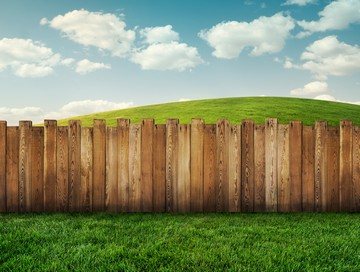
In accordance with the Land Code, all Russian lands are divided into 7 categories, including those intended for agricultural use. However, in accordance with Federal Law No. 101, this category is further divided into two:
- Lands whose purpose is only agriculture and nothing else;
- Territories that are intended for establishing personal subsidiary plots.
Houses for year-round living can be built on plots of the second group. As for the first category, the construction of residential premises on them is absolutely excluded.
The owner of a peasant farm has the legal right to install on its territory buildings necessary for the normal functioning of the organization. This is discussed in Federal Law No. 74 (Article 11).
Conclusion
When deciding to acquire a suburban dacha plot, you should consider several important points. Before purchasing land, you must check its category and VRI. This is not difficult to do; this information is not confidential. If you build a country house on an unsuitable site, you may encounter such a structure being declared illegal. And this, in turn, will entail the need to demolish it and incur additional costs.
Land for dacha construction is one of the types of permitted use of territories, but many developers are little or not familiar with this concept. Therefore, in this article we will consider all the information related to this aspect so that each reader can understand this issue in more detail.
Land for dacha construction - what is it, and how does this type differ from other uses? In accordance with the law, all lands are divided into 7 categories according to their purpose. In turn, each category has a specific list of permitted use options, while areas of the same category can be used for different purposes, the main thing is that this does not contradict the law.
In the photo: no matter what type of building you erect, the status of the land plot is very important
Is it possible to build a house in 2021 with land for gardening?
This regulatory act introduced changes to the Town Planning Code. The code now clearly defines the characteristics of residential premises. In addition, instead of the mandatory prior receipt of a construction permit, a notification procedure has been introduced about the beginning and end of the process of constructing residential real estate.
New law on gardening from January 1, 2021
Agricultural land is considered more narrowly focused. In fact, agricultural land is a special category that is used for growing plants and animals, including for the purpose of entrepreneurship. These are special fertile lands best suited for these purposes.
2. The new law “On the conduct of gardening and vegetable gardening by citizens...” 217-FZ excludes the concept of “residential building” and removes the phrase prohibiting registration in gardening, which is contrary to the Constitution of the Russian Federation. Now, starting from 2021, the new edition of Federal Law 217 clearly establishes the right of citizens to build garden and residential houses, garages on garden plots, and provides an approximate list of outbuildings that can be located on a land plot. The law also defined the concept of a garden house as a structure intended for seasonal (temporary) stay.
This is interesting: At what age does the veteran of labor benefit apply in 2021 in Moscow?
Federal Law 217 new edition from 2021
4. Buildings that are listed in the Unified State Register of Legal Entities and documents as “residential” or “residential structure” are recognized as residential buildings. Houses (buildings) that are listed in the Unified State Register of Legal Entities and documents as “non-residential”, seasonal or auxiliary use, intended for recreation and temporary stay of people, are recognized as garden houses. Replacing previously issued documents or making changes to documents or the Unified State Register is not required, but can be done at will.
Individuals and companies have the opportunity to obtain land. When applying for land, it is not necessary to register as an entrepreneur or organization. But if you are planning a business activity in the form of selling agricultural products, you will have to register it in the prescribed manner.
It is expressly prohibited to build housing on agricultural land for agricultural production or land reclamation. To get rid of the ban, it is necessary to change the type of permitted use to “for dacha placement.” There are also agricultural lands on which you can build (sometimes you can “register”)
Is it legal to build a mansion on a summer cottage?
- for the needs of peasants, farmers and individual subsidiary plots;
- scientific agricultural research;
- livestock and fish farming;
- gardening and gardening;
- hunting management;
- state and municipal enterprises;
- cooperatives and partnerships;
- commercial and non-profit organizations;
- religious communities;
- Cossack communities;
- small nations;
- construction of engineering structures and linear facilities.
- Documents for the house confirming its suitability for permanent residence (technical examinations, extract from the Unified State Register of Real Estate indicating “residential building”).
- Certificate of ownership of a residential property.
- Application for registration (issued by the registration authority).
- Passports of persons entering the house.
The new law abolishes the concept of a dacha, and with it most types of gardeners' associations. Now only two forms of associations are available: gardening partnerships and vegetable gardening (SNT and ONT, respectively). Areas located in such structures can only be used for gardening and vegetable gardening.
How to register in SNT from 2021
Summer residents should remember this nuance when starting the construction of a residential building, since the possibility of its construction will be determined not only by the type of permitted use of the land, but also by the general plan approved by the municipality.
In order not to become a violator of the law and not to fall under the scope of the Administrative Code of the Russian Federation (Administrative Code of the Russian Federation Art. 8.8), you need to know what type of permitted use your agricultural land plot belongs to and act strictly in accordance with the VRI Classifier.
Type and category of permitted land use
Every potential landowner should know what the status of a land plot is. This way the problem of implementing your plans, successful investment of funds and the possibility of receiving income from what you have in mind can be solved. Any plot has its own specific status. After all, the use of agricultural land can be different. If plans for the construction of an object on the territory contradict its status, then they simply will not be approved. The Land Law provides for amendments and clarifications to projects. Legally, there are certain restrictions. Rational use of land is very important. The fact is that inconsistency between different subjects of law creates fertile ground for manipulation and abuse. For example, agricultural lands are not intended for the construction of residential buildings on them. If you are purchasing territory for individual residential construction, then you cannot build structures intended for commercial purposes. Rational use of land is considered an integral part of the state’s agricultural development plan.
The type and category of permitted use of land imply various restrictions on objects built on it. But there is no particular difference between some plot statuses. For example, many dachas (recreational land plots with residential buildings) are no different from individual housing developments, except that the territory for the construction of dachas has a lower cost. The significant difference is that it is impossible to register in such a site. However, if the site is located within the boundaries of a settlement, then you will most likely be able to register. But other restrictions associated with individual housing construction do not apply in the case of dacha construction. So, you can build a building higher than three floors, you will not need to conduct a mandatory technical examination, and the regulatory authorities will not have any questions for you regarding the purpose of these buildings. The choice is yours; both cases have their pros and cons. Of course, the construction of medical institutions is not provided for in dacha settlements.
We recommend reading: How to take an extract from the house register
What is the fundamental difference between individual housing construction and non-domestic construction lands?
The main significant difference between individual housing construction and non-residential construction land plots is the following:
- Land for individual housing construction provides only the intended use for permanent residence, and therefore is always located within the boundaries of a populated area. Permanent residence is not provided for in the DNP; the village is oriented towards seasonal functioning.
- Based on the intended purpose, infrastructure is not developed within the dacha village, and transport links are provided only from the opening of the dacha season until its closure.
- The cost of land for individual housing construction is significantly higher than that of summer cottages, even if they are located within the city limits, in adjacent cadastral blocks.
Based on the list of similar properties and differences, we can conclude that each of the types of land real estate can promise benefits if the issue of choosing the right option is approached correctly.
In particular, it is profitable to purchase a plot of land for individual housing construction when the buyer has the funds and the desire to invest his savings in real estate, which will be in demand during subsequent sale. Or - the landowner intends to build a permanent house in which he plans to live with his family. Sometimes there is a profitable chance to purchase such a plot in interest-free installments or with a mortgage.
The advantages that provide for the benefits of purchasing land in the DNP are based on the need to purchase a summer house, rather than a residential building. Also, if the country house is located within the city and allows year-round living, you can buy it in order to save money, and subsequently try to convert the country house into a residential building and obtain registration.
Do I need a permit for summer cottage construction?
If a territory for dacha construction has been found, and all the properties and characteristics of the site suit the new owner, the question arises of where to begin the construction of a capital structure: you must first obtain permission, then build, or you need to build, then register the structure.
Remember that in the territory designated for summer cottage construction, there is no need to prepare documents to begin construction work. According to the simplified system, registration of residential premises within the dacha territory is carried out after the fact. First, land owners erect a structure, then register it.
In order to begin registering a residential building on a summer cottage site, it is necessary to submit a declaration on the construction of the property. That is why it is much more profitable to build permanent housing on dacha plots, and not on the territory allocated for individual housing construction, since many permits and approvals of the project with urban planning and architectural documentation are required there.
Was the Recording helpful? No 5 out of 6 readers found this post helpful.
How to obtain a building permit - step-by-step instructions
If before August 2021 it was necessary to obtain a construction permit, now the procedure has changed. According to Art. 51 of the Civil Code of the Russian Federation (https://www.consultant.ru/document/cons_doc_LAW_51040/570afc6feff03328459242886307d6aebe1ccb6b/) before starting construction, the land owner is obliged to notify the authorities about this. The form of the document is slightly different, but in general it gives the same powers. Thus, this notification is permission to build a house in SNT. So what is the sequence of actions?
Checking the site category
Simply contacting the administration is not enough; before that, you need to check what category is assigned to the site, and also find out which municipality the land belongs to. If the site is located in a conservation area or in an area not intended for construction, permission will be denied.

Preparation of documents
Preparation of documents is an important stage; you should start with receiving an extract from the Unified State Register of Real Estate.
Then you need to fill out a notice of planned construction in the form approved by Order of the Ministry of Construction of the Russian Federation dated September 19, 2018 No. 591:
- passport details and full name of the person conducting the development;
- cadastral number, address and description of the location of the site;
- presence of other owners;
- information about the purpose of the site;
- layout of objects on the site, distance from borders and other objects;
- notification that in the future the premises will not be divided into several independent objects;
- contact details of the applicant and method of response.
The notification form for planned construction can be downloaded here.
Contacting the organization
The owner is obliged to contact the organization authorized to issue a building permit in a horticultural non-profit partnership (SNT). This could be the local administration, the department of land and property relations, or the town planning committee. Rosreestr, BTI, and the Cadastral Chamber do not deal with such issues.
You can submit documents in any way: by mail, in person, through the MFC, or the State Services portal. If a representative acts instead of the owner of the plot, his powers must be confirmed by a notarized power of attorney.
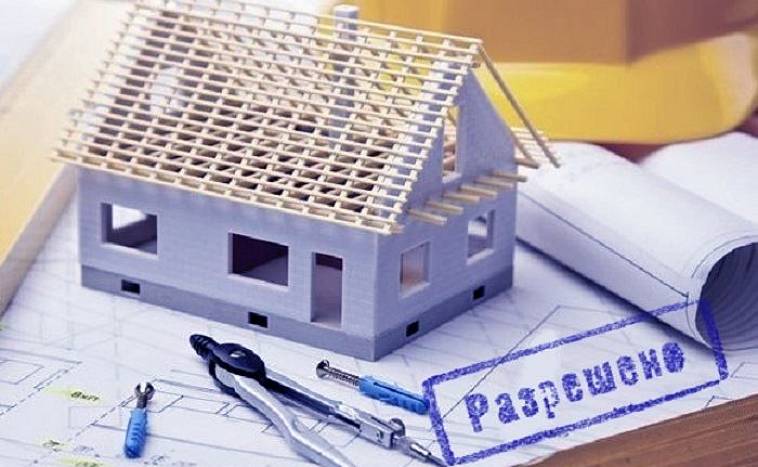
Obtaining a building permit
A reasoned decision is made within 7 working days from the date of receipt of the application. If the structure does not exceed the maximum parameters provided for by law, permission will not be denied. If the project has critical deviations, it will be necessary to make adjustments and send the documents for re-approval.
IMPORTANT! The permit is issued free of charge and is valid for 10 years from the date of receipt.
For more information on how to obtain permission to build a house, read our article.
Agricultural land for summer cottage construction March 1, 2020
The authorities are already identifying unregistered objects and have gained some experience. First of all, they use Google Maps and drones. In many districts of the Moscow region, owners have already received a requirement to register the buildings on the land plot with cadastral registration. Moreover, such letters come from Rosreestr (Cadastral Chamber), and from the administration, and from the tax authorities.
Many city dwellers strive to purchase a country plot of land surrounded by beautiful nature and clean air. And those who have become the owner of agricultural land often think about the possibility of subsequently building small country houses or luxury cottages on it.



